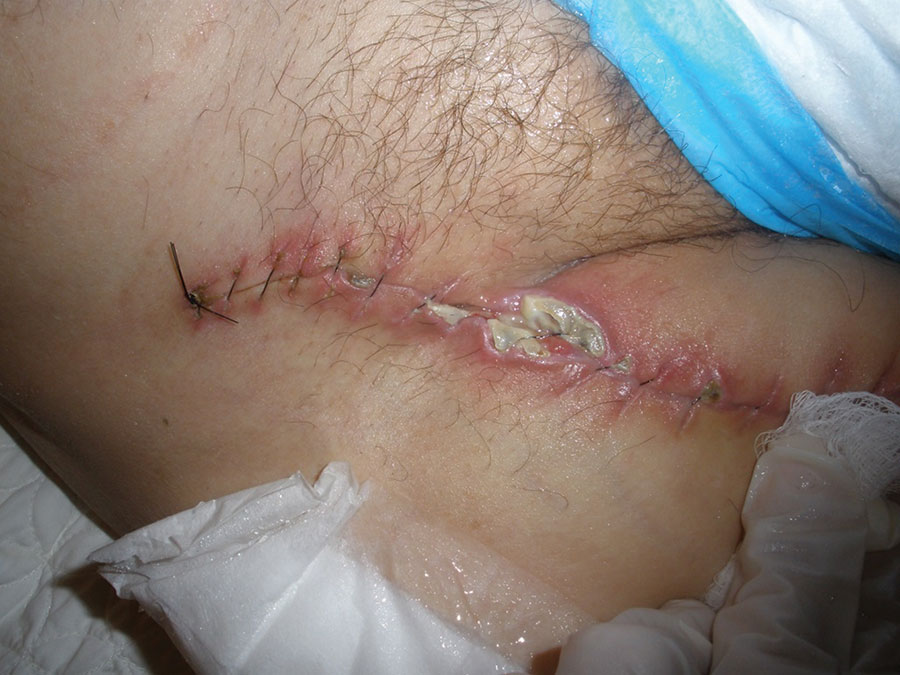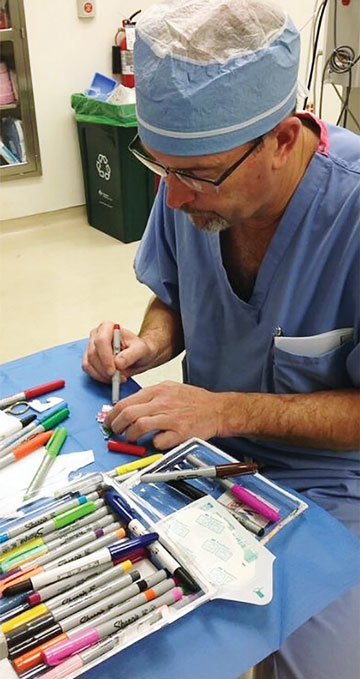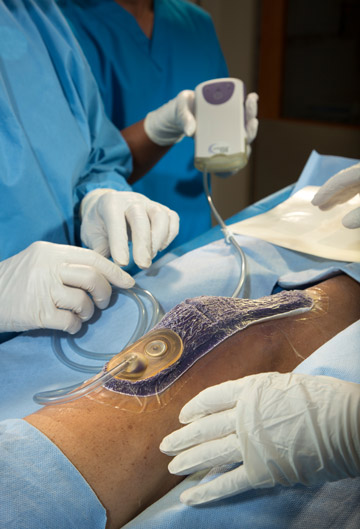Give patients enough information and support so they feel as if you're right there with them.
 Credit: American College of Surgeons
Credit: American College of Surgeons HANDLE WITH CARE To prevent infection and reduce scarring due to surgical wounds like this one, patients and their at-home caregivers need to be armed with the necessary education, products and resources.
Surgical teams do everything they can to encourage proper wound healing for their recovering patients. Unfortunately, they aren't there to continue managing wounds after patients are back at home. That means patients need to know the do's and don'ts of wound care to reduce scarring and prevent infection. Here are five tips to give them what they need.
- Educate. Don't wait until after procedures to discuss wound management. Nancy Strand, MPH, RN, manager of surgical patient education for the American College of Surgeons (ACS), says it's not ideal to give that information at discharge. "They're dealing with so much emotional and physical strain and stress that cognitively it's not a time for learning or remembering," she notes. Kathy Gallagher, DNP, APRN-FNP, CMC, UMC, BC, WCC, CWS, FACCWS, coordinator of the Acute Surgical Wound Service at Christiana Care Health Services in Newark, Del., adds that the person who'll provide care to the patient at home should also be present for this education, which should account for that patient's specific background and needs.
- Show and tell. Before surgery, the patient and caregiver should come into the surgeon's office to see exactly how the dressing should be changed. This gives them time to prepare. Reinforce that in-person instruction with videos about changing dressings and cleaning wounds. ACS' wound home skills tool kit and checklist can help caregivers assess their capabilities. The idea is for the patient and caregiver to feel confident about their ability to treat the wound well in advance of surgery, and certainly before they get home.
- Provide clear instructions. There are thousands of dressing options from which to choose, and sometimes a combination of products is needed. The patient and their caregiver need your help in procuring the proper supplies. Provide specific instructions about when the patient will be due for a dressing change and the supplies they'll need. Dr. Gallagher says some patients unnecessarily change dressings daily, without realizing that every time a dressing is removed, it takes the wound about 4 hours to get back to the ideal temperature for healing. "The idea is to keep a perfectly moist environment that's not too wet and not too dry," she says.
- Keep it simple. Give patients a packet of key information to bring home. A good discharge form puts all the essential information in one place and gives patients a reference to lean on. This simple act can make their self-care feel more manageable. Include provider contact info, patient-specific wound cleaning and dressing instructions, guidance about the supplies they'll need and details about pain medication considerations before cleaning a wound or changing a dressing. Break it all down for the patient in the simplest possible terms so it's a definitive resource upon which they can rely.
- Provide assistance. The education and information you provide should address what the patient and caregiver must do if the wound shows signs of infection at home. It should also describe what the warning signs of infection are. Give patients a phone number for the provider they can call when they have concerns. A proactive response can make the difference between a wound that can be managed at home and one that requires hospitalization or becomes chronic.
A wound care plan that starts before surgery sets patients up for success when they head home. By prepping patients in advance, they'll leave your facility with the confidence to take care of themselves, and make fewer trips to the hospital with infections.
.svg?sfvrsn=be606e78_3)



.svg?sfvrsn=56b2f850_5)